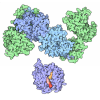Entry Database : PDB / ID : 4dgpTitle The wild-type Src homology 2 (SH2)-domain containing protein tyrosine phosphatase-2 (SHP2) Tyrosine-protein phosphatase non-receptor type 11 Keywords Function / homology Function Domain/homology Component
/ / / / / / / / / / / / / / / / / / / / / / / / / / / / / / / / / / / / / / / / / / / / / / / / / / / / / / / / / / / / / / / / / / / / / / / / / / / / / / / / / / / / / / / / / / / / / / / / / / / / / / / / / / / / / / / / / / / / / / / / / / / / / / / / / / / / / / / / / / / / Biological species Homo sapiens (human)Method / / / Resolution : 2.3 Å Authors Yu, Z.H. / Xu, J. / Walls, C.D. / Chen, L. / Zhang, S. / Wu, L. / Wang, L.N. / Liu, S.J. / Zhang, Z.Y. Journal : J.Biol.Chem. / Year : 2013Title : Structural and Mechanistic Insights into LEOPARD Syndrome-Associated SHP2 Mutations.Authors : Yu, Z.H. / Xu, J. / Walls, C.D. / Chen, L. / Zhang, S. / Zhang, R. / Wu, L. / Wang, L. / Liu, S. / Zhang, Z.Y. History Deposition Jan 26, 2012 Deposition site / Processing site Revision 1.0 Mar 6, 2013 Provider / Type Revision 1.1 Mar 20, 2013 Group Revision 1.2 May 1, 2013 Group Revision 1.3 Feb 28, 2024 Group / Database referencesCategory chem_comp_atom / chem_comp_bond ... chem_comp_atom / chem_comp_bond / database_2 / struct_ref_seq_dif Item / _database_2.pdbx_database_accession / _struct_ref_seq_dif.details
Show all Show less
 Yorodumi
Yorodumi Open data
Open data Basic information
Basic information Components
Components Keywords
Keywords Function and homology information
Function and homology information Homo sapiens (human)
Homo sapiens (human) X-RAY DIFFRACTION /
X-RAY DIFFRACTION /  SYNCHROTRON /
SYNCHROTRON /  MOLECULAR REPLACEMENT / Resolution: 2.3 Å
MOLECULAR REPLACEMENT / Resolution: 2.3 Å  Authors
Authors Citation
Citation Journal: J.Biol.Chem. / Year: 2013
Journal: J.Biol.Chem. / Year: 2013 Structure visualization
Structure visualization Molmil
Molmil Jmol/JSmol
Jmol/JSmol Downloads & links
Downloads & links Download
Download 4dgp.cif.gz
4dgp.cif.gz PDBx/mmCIF format
PDBx/mmCIF format pdb4dgp.ent.gz
pdb4dgp.ent.gz PDB format
PDB format 4dgp.json.gz
4dgp.json.gz PDBx/mmJSON format
PDBx/mmJSON format Other downloads
Other downloads 4dgp_validation.pdf.gz
4dgp_validation.pdf.gz wwPDB validaton report
wwPDB validaton report 4dgp_full_validation.pdf.gz
4dgp_full_validation.pdf.gz 4dgp_validation.xml.gz
4dgp_validation.xml.gz 4dgp_validation.cif.gz
4dgp_validation.cif.gz https://data.pdbj.org/pub/pdb/validation_reports/dg/4dgp
https://data.pdbj.org/pub/pdb/validation_reports/dg/4dgp ftp://data.pdbj.org/pub/pdb/validation_reports/dg/4dgp
ftp://data.pdbj.org/pub/pdb/validation_reports/dg/4dgp Links
Links Assembly
Assembly
 Components
Components Homo sapiens (human) / Gene: PTPN11, PTP2C, SHPTP2 / Plasmid: pET21A+ / Production host:
Homo sapiens (human) / Gene: PTPN11, PTP2C, SHPTP2 / Plasmid: pET21A+ / Production host: 
 X-RAY DIFFRACTION / Number of used crystals: 1
X-RAY DIFFRACTION / Number of used crystals: 1  Sample preparation
Sample preparation SYNCHROTRON / Site:
SYNCHROTRON / Site:  APS
APS  / Beamline: 19-BM / Wavelength: 0.97915 Å
/ Beamline: 19-BM / Wavelength: 0.97915 Å Processing
Processing MOLECULAR REPLACEMENT / Resolution: 2.3→36.85 Å / SU ML: 0.32 / σ(F): 1.44 / Phase error: 25.7 / Stereochemistry target values: ML
MOLECULAR REPLACEMENT / Resolution: 2.3→36.85 Å / SU ML: 0.32 / σ(F): 1.44 / Phase error: 25.7 / Stereochemistry target values: ML Movie
Movie Controller
Controller






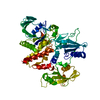
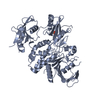

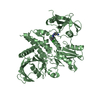
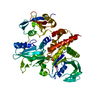

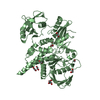
 PDBj
PDBj










